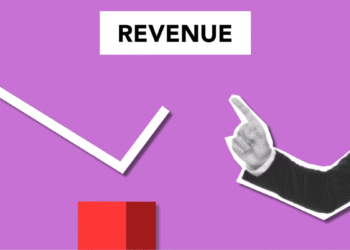Man, I still remember the first time I dealt with a fake review.
I ran this tiny online store. Nothing fancy, just a curated collection of handmade gifts. One morning, I logged into my dashboard with coffee in hand, all chill, until BAM! There it was. A one-star review from “John2456” saying my product “smelled like mildew and arrived shattered.” The kicker? I didn’t even sell the product they mentioned.
That moment hit me like a truck. I was mad, confused, and kinda helpless. It felt like someone vandalized my front window and walked off. If you’ve been there, trust me, you’re not alone.
First, Don’t Panic (Even Though You’ll Want To)
I know it’s easier said than done, but reacting emotionally — like replying with “YOU’RE LYING!” in all caps — is just gonna make things worse. People reading your reviews aren’t just looking at the stars. They’re reading how you respond.
What helped me was creating a little rule: wait 24 hours before responding to a bad review. That way, emotions simmer down and you can approach it with clarity. Cool heads write better replies.
For more help on handling criticism constructively, check out how to handle negative reviews professionally.
Identify the Fakes with a Sharp Eye
There are some dead giveaways. Here’s what I watch out for:
-
The reviewer’s name is a random string of letters or numbers.
-
The review is super vague or uses generic language (“This product is terrible” — but no context).
-
It mentions things you don’t even sell.
-
They’ve left identical reviews on other businesses (Google can show you this if you click their name).
If you spot one or more of these, odds are you’re dealing with spam or a competitor trying to mess with your rep.
Some tools can help here. If you’re overwhelmed by monitoring everything yourself, look into platforms for managing customer reviews. They often include spam detection and moderation features.
Report the Review (Yes, You Can)
Most platforms — like Google, Yelp, Amazon, and Facebook — do allow you to flag suspicious reviews. It’s buried in the interface sometimes, but it’s there.
-
On Google, click the three dots next to the review and choose Report Review.
-
On Yelp, go to More Options under the review and click Report.
-
On Facebook, it’s hidden under the “…” menu.
-
Amazon is trickier, but if you’re a seller, you can report it through Seller Central support.
Be detailed when reporting. Just saying “this is fake” won’t cut it. Instead, explain why it’s suspicious: “This person reviewed a product we don’t sell, and they’ve left 30 similar reviews across other businesses in the last hour.”
Also, if you’re worried about crossing any lines yourself, brush up on the legal considerations for displaying reviews especially if you’re responding or taking action publicly.
Respond Publicly (But Keep It Classy)
Even if you report it, the review might stick around for a while. That’s why I always reply to it publicly. Something like:
“Hi there, we take all feedback seriously. We couldn’t find any record of your order, and the product you mentioned isn’t part of our catalog. Please reach out to us directly so we can investigate further.”
This shows other customers you’re paying attention and handling things professionally. And yeah, that stuff does matter.
If you want more ways to build credibility even through your responses, here’s a solid read on responding to customer reviews to build engagement.
Keep Track of Repeat Offenders
This part’s a little annoying, but it helps: start a spreadsheet to track suspicious reviews. Note the username, platform, content, and date. If you spot patterns — like the same person targeting you every month — it gives you ammo if you ever need to escalate to platform support or even a lawyer (hopefully not, but hey, it happens).
Boost the Good Stuff
Let’s face it, you can’t always remove a fake review. But you can drown it out.
Encourage your legit customers to leave honest feedback. After a sale, send a follow-up email or message: “Hey! If you loved your purchase, a quick review helps us a ton.” The more real reviews you get, the less visible the bad apples become.
Make sure you’re not crossing any ethical lines though, check out this guide on incentivizing reviews without violating guidelines. It’ll show you how to do it the right way.
And don’t be shy about asking regulars or happy clients — folks you’ve built real trust with — to share their experience publicly. Those reviews have serious weight, especially when they’re specific and heartfelt.
Conclusion
Honestly, managing fake reviews can be one of the most frustrating parts of running a business online. It feels unfair, and it kinda is. But you’re not powerless. Learn the signs. Stay calm. Use the tools available. And above all — don’t let the fakes distract you from serving the people who actually care about what you do.








